Jose F. Rodrigues-Jr
From Cities to Series: Complex Networks and Deep Learning for Improved Spatial and Temporal Analytics*
Jun 01, 2022Abstract:Graphs have often been used to answer questions about the interaction between real-world entities by taking advantage of their capacity to represent complex topologies. Complex networks are known to be graphs that capture such non-trivial topologies; they are able to represent human phenomena such as epidemic processes, the dynamics of populations, and the urbanization of cities. The investigation of complex networks has been extrapolated to many fields of science, with particular emphasis on computing techniques, including artificial intelligence. In such a case, the analysis of the interaction between entities of interest is transposed to the internal learning of algorithms, a paradigm whose investigation is able to expand the state of the art in Computer Science. By exploring this paradigm, this thesis puts together complex networks and machine learning techniques to improve the understanding of the human phenomena observed in pandemics, pendular migration, and street networks. Accordingly, we contribute with: (i) a new neural network architecture capable of modeling dynamic processes observed in spatial and temporal data with applications in epidemics propagation, weather forecasting, and patient monitoring in intensive care units; (ii) a machine-learning methodology for analyzing and predicting links in the scope of human mobility between all the cities of Brazil; and, (iii) techniques for identifying inconsistencies in the urban planning of cities while tracking the most influential vertices, with applications over Brazilian and worldwide cities. We obtained results sustained by sound evidence of advances to the state of the art in artificial intelligence, rigorous formalisms, and ample experimentation. Our findings rely upon real-world applications in a range of domains, demonstrating the applicability of our methodologies.
DropLeaf: a precision farming smartphone application for measuring pesticide spraying methods
Aug 31, 2020



Abstract:Pesticide application has been heavily used in the cultivation of major crops, contributing to the increase of crop production over the past decades. However, their appropriate use and calibration of machines rely upon evaluation methodologies that can precisely estimate how well the pesticides' spraying covered the crops. A few strategies have been proposed in former works, yet their elevated costs and low portability do not permit their wide adoption. This work introduces and experimentally assesses a novel tool that functions over a smartphone-based mobile application, named DropLeaf - Spraying Meter. Tests performed using DropLeaf demonstrated that, notwithstanding its versatility, it can estimate the pesticide spraying with high precision. Our methodology is based on image analysis, and the assessment of spraying deposition measures is performed successfully over real and synthetic water-sensitive papers. The proposed tool can be extensively used by farmers and agronomists furnished with regular smartphones, improving the utilization of pesticides with well-being, ecological, and monetary advantages. DropLeaf can be easily used for spray drift assessment of different methods, including emerging UAV (Unmanned Aerial Vehicle) sprayers.
Pay Attention to Evolution: Time Series Forecasting with Deep Graph-Evolution Learning
Aug 28, 2020



Abstract:Time-series forecasting is one of the most active research topics in predictive analysis. A still open gap in that literature is that statistical and ensemble learning approaches systematically present lower predictive performance than deep learning methods as they generally disregard the data sequence aspect entangled with multivariate data represented in more than one time series. Conversely, this work presents a novel neural network architecture for time-series forecasting that combines the power of graph evolution with deep recurrent learning on distinct data distributions; we named our method Recurrent Graph Evolution Neural Network (ReGENN). The idea is to infer multiple multivariate relationships between co-occurring time-series by assuming that the temporal data depends not only on inner variables and intra-temporal relationships (i.e., observations from itself) but also on outer variables and inter-temporal relationships (i.e., observations from other-selves). An extensive set of experiments was conducted comparing ReGENN with dozens of ensemble methods and classical statistical ones, showing sound improvement of up to 64.87% over the competing algorithms. Furthermore, we present an analysis of the intermediate weights arising from ReGENN, showing that by looking at inter and intra-temporal relationships simultaneously, time-series forecasting is majorly improved if paying attention to how multiple multivariate data synchronously evolve.
Reconstructing commuters network using machine learning and urban indicators
Aug 09, 2019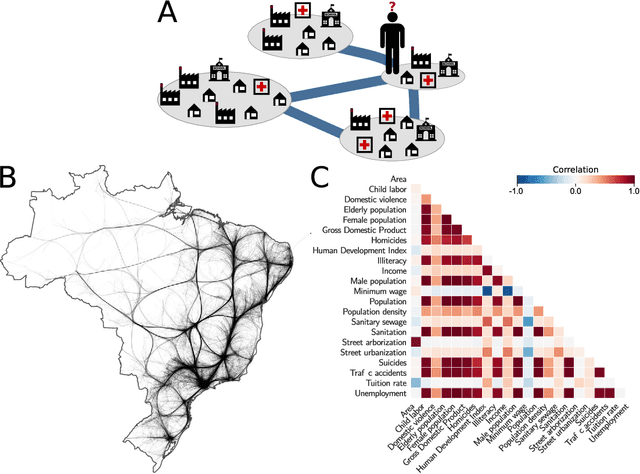
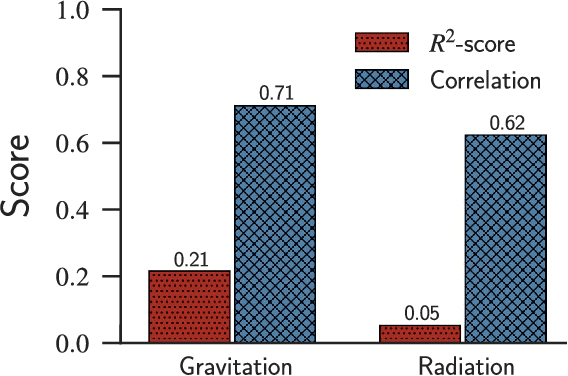
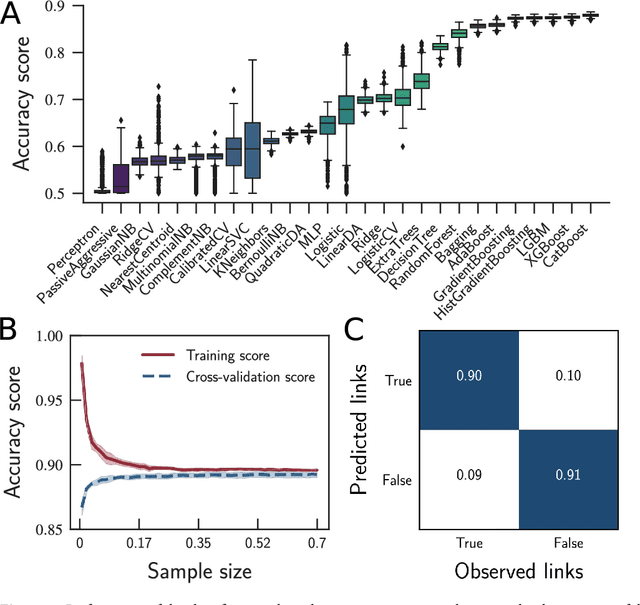
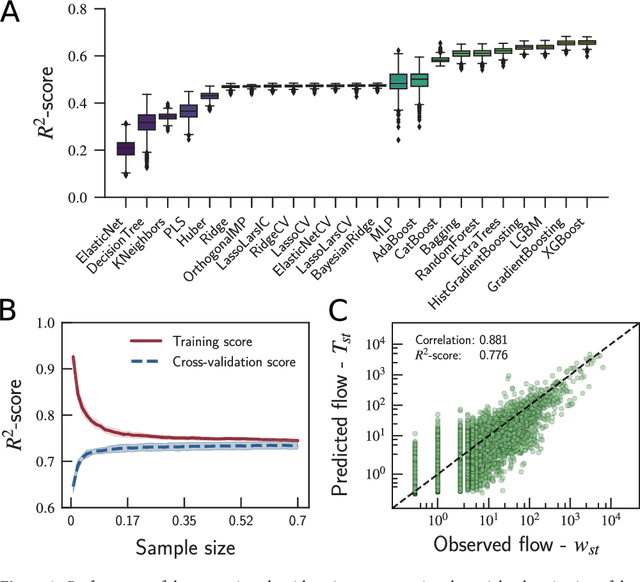
Abstract:Human mobility has a significant impact on several layers of society, from infrastructural planning and economics to the spread of diseases and crime. Representing the system as a complex network, in which nodes are assigned to regions (e.g., a city) and links indicate the flow of people between two of them, physics-inspired models have been proposed to quantify the number of people migrating from one city to the other. Despite the advances made by these models, our ability to predict the number of commuters and reconstruct mobility networks remains limited. Here, we propose an alternative approach using machine learning and 22 urban indicators to predict the flow of people and reconstruct the intercity commuters network. Our results reveal that predictions based on machine learning algorithms and urban indicators can reconstruct the commuters network with 90.4% of accuracy and describe 77.6% of the variance observed in the flow of people between cities. We also identify essential features to recover the network structure and the urban indicators mostly related to commuting patterns. As previously reported, distance plays a significant role in commuting, but other indicators, such as Gross Domestic Product (GDP) and unemployment rate, are also driven-forces for people to commute. We believe that our results shed new lights on the modeling of migration and reinforce the role of urban indicators on commuting patterns. Also, because link-prediction and network reconstruction are still open challenges in network science, our results have implications in other areas, like economics, social sciences, and biology, where node attributes can give us information about the existence of links connecting entities in the network.
* 28 pages, 5 figures
A smartphone application to measure the quality of pest control spraying machines via image analysis
Dec 16, 2017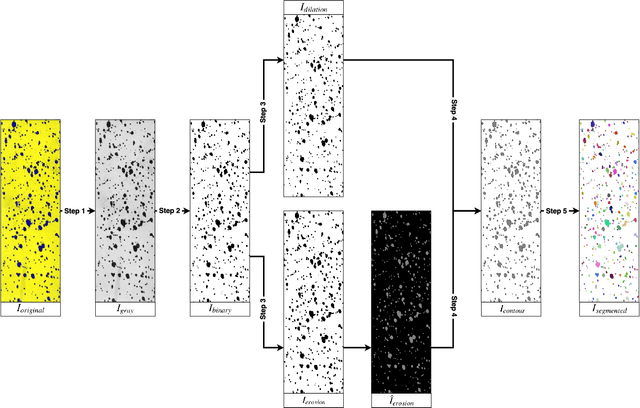

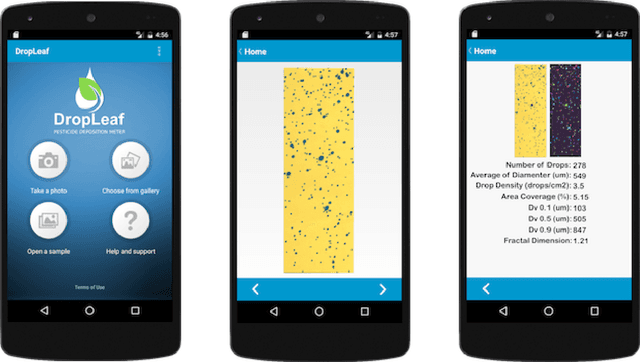

Abstract:The need for higher agricultural productivity has demanded the intensive use of pesticides. However, their correct use depends on assessment methods that can accurately predict how well the pesticides' spraying covered the intended crop region. Some methods have been proposed in the literature, but their high cost and low portability harm their widespread use. This paper proposes and experimentally evaluates a new methodology based on the use of a smartphone-based mobile application, named DropLeaf. Experiments performed using DropLeaf showed that, in addition to its versatility, it can predict with high accuracy the pesticide spraying. DropLeaf is a five-fold image-processing methodology based on: (i) color space conversion, (ii) threshold noise removal, (iii) convolutional operations of dilation and erosion, (iv) detection of contour markers in the water-sensitive card, and, (v) identification of droplets via the marker-controlled watershed transformation. The authors performed successful experiments over two case studies, the first using a set of synthetic cards and the second using a real-world crop. The proposed tool can be broadly used by farmers equipped with conventional mobile phones, improving the use of pesticides with health, environmental and financial benefits.
 Add to Chrome
Add to Chrome Add to Firefox
Add to Firefox Add to Edge
Add to Edge